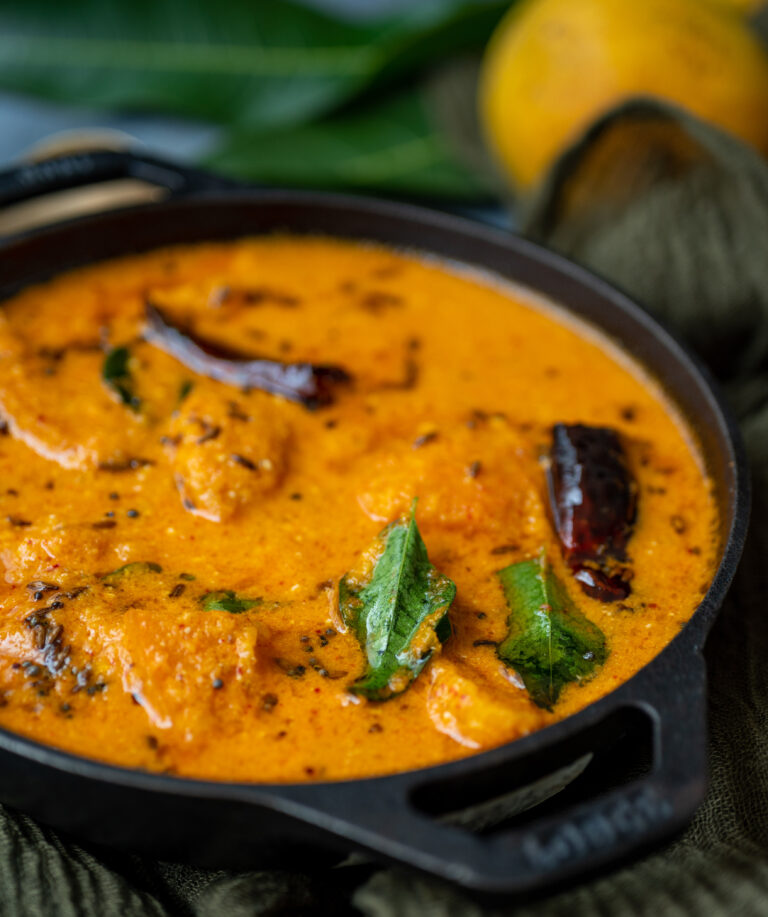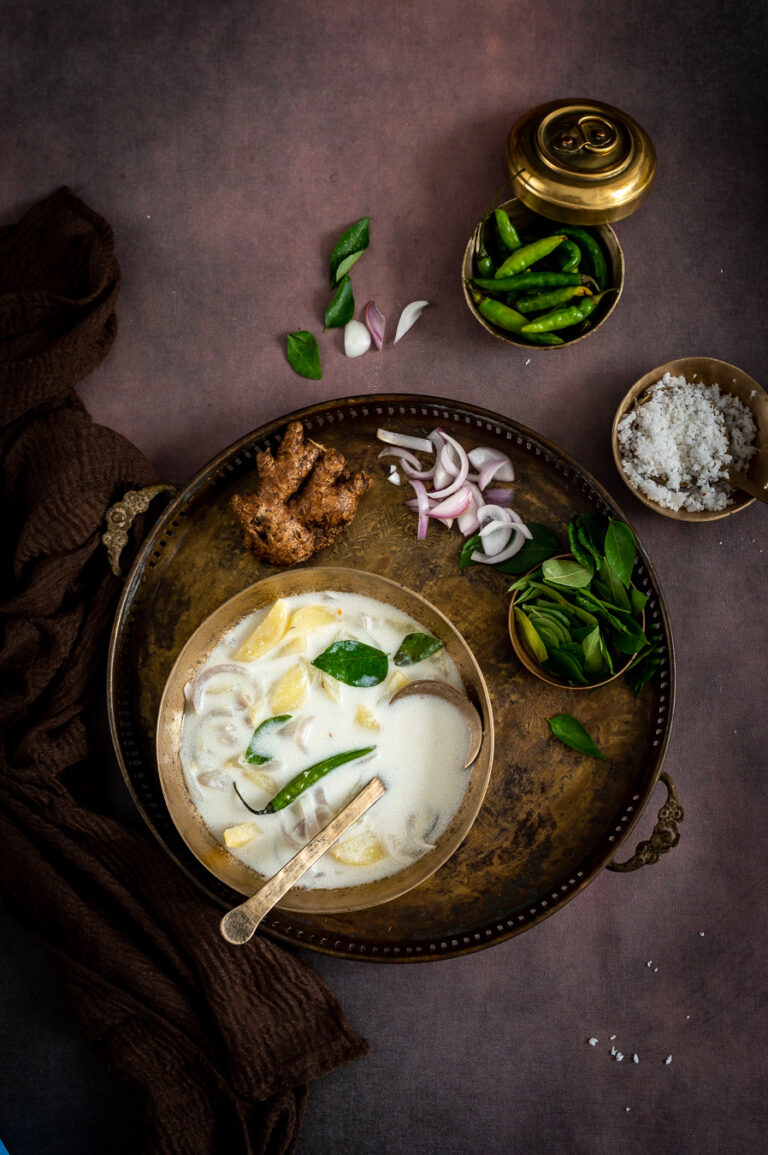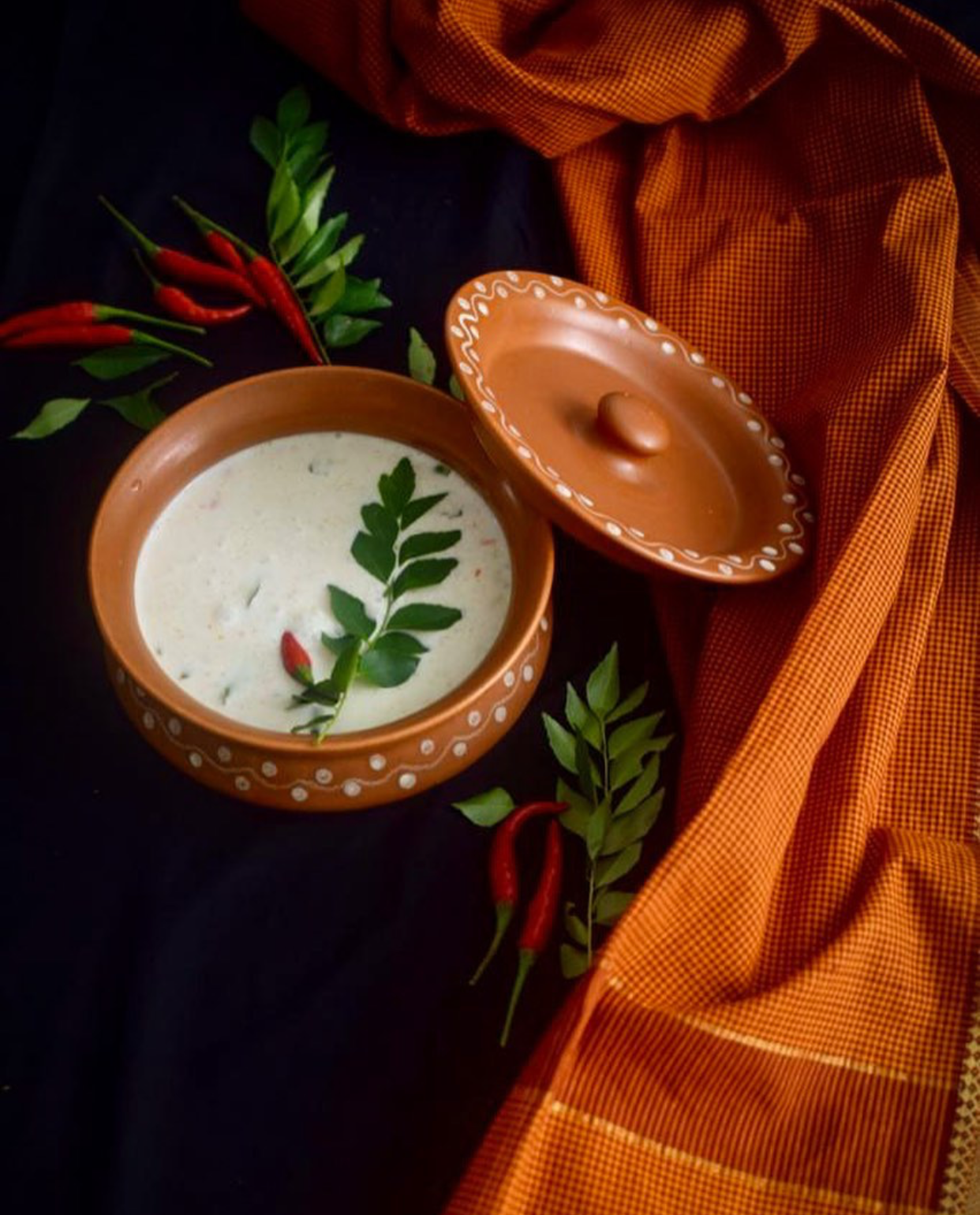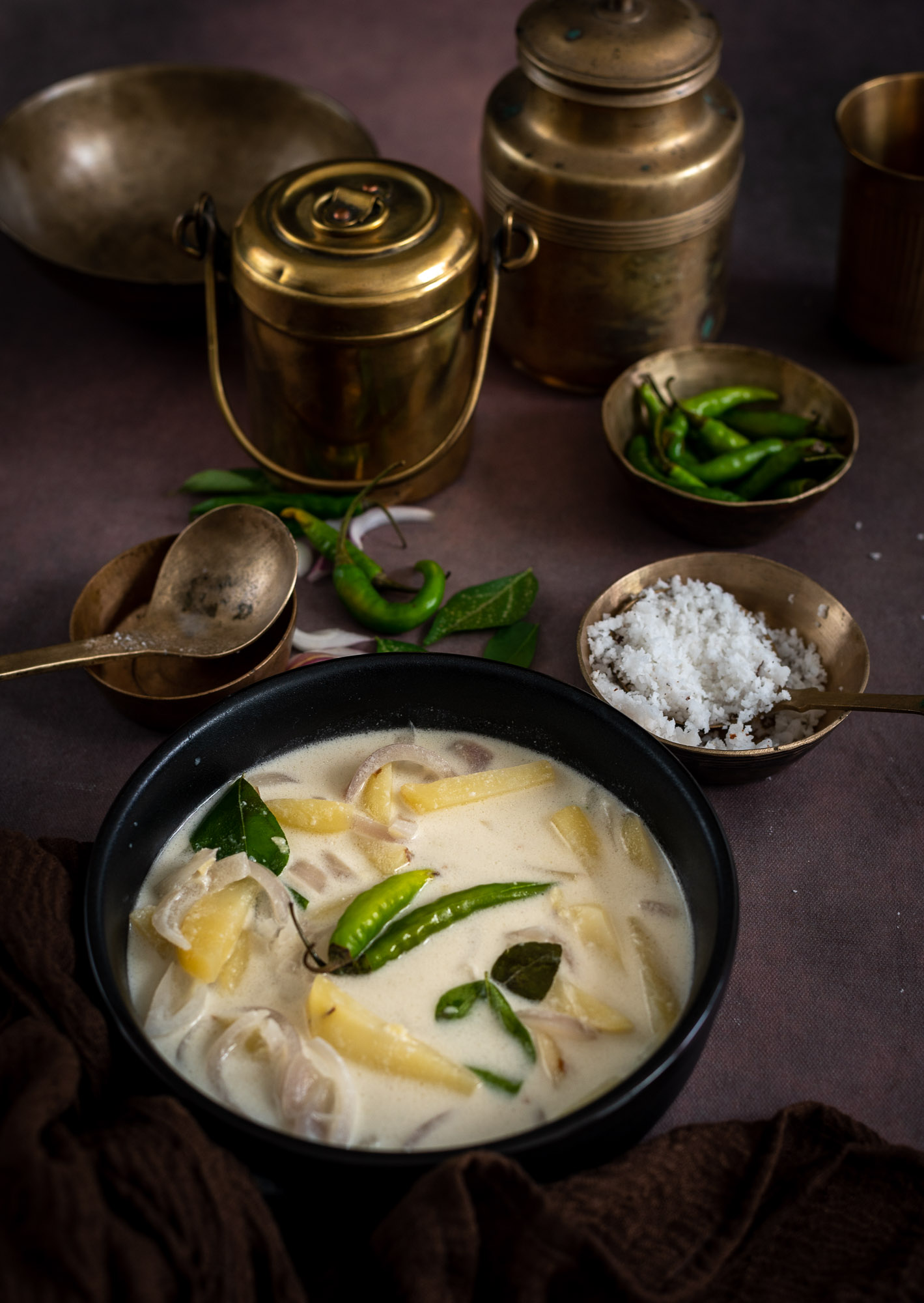Last week, I offered you the recipe for kela nu shaak, a Gujarati dish that was inspired by seeing bananas all around me while travelling in Kerala. Today, my love of tropical fruits is explored through another recipe. This one is also closely tied to my recent trip as it is a part of Malayali cuisine. My favourite place to eat while in Kerala is always the Grand Hotel in Kochi. It is a simple but beautiful art deco hotel, and the restaurant is always full as its delicious traditional fare is very popular. Red rice is usually served alongside various vegetarian and non-vegetarian curries. This was where I first tasted mambalam pulissery, which I had again on this trip, of course. Each year, during mango season, I make it at home too.
If you recall, I had shared a recipe for pineapple curry with you a few years ago, and this is somewhat similar in its preparation. When I began making it at home, I found that mambalam pulissery is pretty easy, and I was able to tweak the recipe to my liking too. My family really enjoys it so it’s quite often on our dining table at this time of year. Also, when my relatives visit me from outside Chennai, where I live, they always request South Indian meals. They want novelty from the Gujarati fare that they usually have in their own homes. During the summer, this mambalam pulissery is one of their favourites.
What determines the flavour is the kind of mango that one uses, and the taste of each variety can be noted in the dish. Here, I usually use a sindoora or peetr. I have also found that alphonso or banagapalli work very well in this recipe. Really, any ripe mango from your vicinity or back garden will go perfectly.
There is something about growing ingredients on your own that makes the whole experience of cooking more pleasurable. For instance, I happen to be fortunate to have mango trees at home. So I’ll pluck some fruit from my sindoora tree and put it in this dish, and then I’ll find myself repeating to every person who eats the meal: “These mangoes are from that tree at the back, and the coconut base is from my coconut trees too!” It really feels quite special to say this. This hardly only applies to just mangoes or coconuts. If you don’t have a garden, considering growing herbs in your kitchen, or utilise a balcony or terrace. It really makes a difference in how you feel about the food you prepare when you put homegrown ingredients in.

Mambalam Pulissery
(Yield: Serves 2-4)
½ cup grated coconut
2 whole red Kashmiri chillies
A pinch of turmeric
1 teaspoon ginger-chilli paste
1 teaspoon jeera (cumin seeds)
2 ripe mangoes (peeled and cut into big pieces)
¼ cup curd
Tempering
1 tablespoon sesame oil
½ teaspoon jeera
½ teaspoon mustard
½ teaspoon urad dal
A pinch of asafoetida
Blend the coconut, red chillies, turmeric, ginger-chilli paste and jeera with enough water to make a paste. Set aside.
In a pot, add the ripe mangoes. Immediately after, add a cup of hot water and salt. Cover the pot and allow to cook until the mangoes are a little tender. It will take a few minutes. Mix gently.
Once the mangoes are tender, add the paste that was set aside earlier.
Next, beat the curd until it is smooth and then add it to the pot.
To prepare the tempering, add the sesame oil. Once the oil is hot, add the urad dal, then jeera and mustard. Allow to splutter. Then, add curry leaves and red chillies along with asafoetida.
Pour the tempering on the cooked mangoes. Stir gently.
Mambalam pulissery is usually served with rice. Enjoy it hot.
If you’d like to explore another recipe from Kerala cuisine, I’d recommend this coconut stew. As for mangoes themselves, I have a whole selection of recipes over the years!





